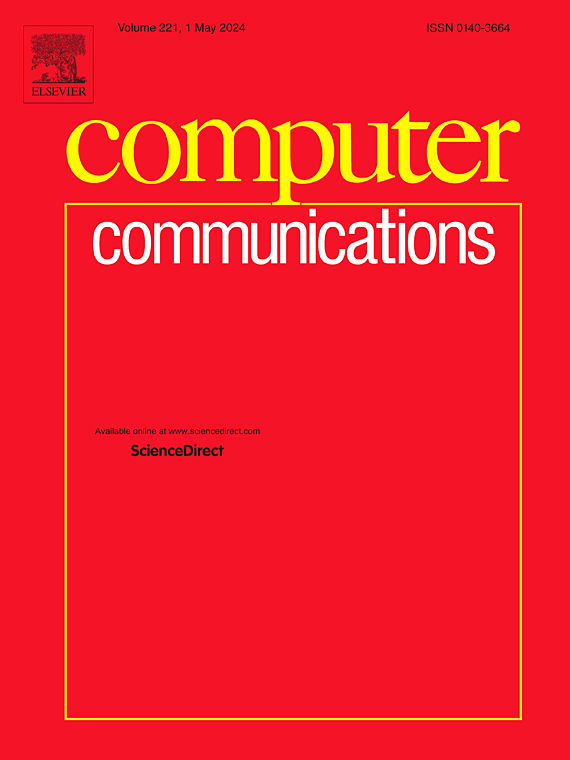可分解RAN设计中的柔性关联与布局
IF 4.5
3区 计算机科学
Q1 COMPUTER SCIENCE, INFORMATION SYSTEMS
引用次数: 0
摘要
在Open RAN体系结构中,经典的gNB无线电协议栈被分解为虚拟化组件:集中式单元(CU)、分布式单元(DU)和无线电单元(RU)。每个单元都部署在支持云的RAN基础设施中,以满足用户的服务质量(QoS)需求。在此框架中,我们提出了开放式RAN单元放置方法,以最大限度地提高用户设备(UE)的准入,同时确保其QoS需求。我们专注于两项主要任务:(i)建立UE-RU关联;(ii)在网络的云主机上放置cu和du。我们将联合关联-放置UE-DU-CU优化问题表述为整数线性规划(ILP)模型,并提出了除最优模型外的两种解决方法:(i)分解和顺序求解ILP模型的算法和(ii)模拟联合优化模型的递归神经网络(RNN)启发式算法。我们在不同的网络资源可用性中评估最优模型的性能。与基线模型相比,仿真表明我们的方法在最小化部署成本和增加公平性的同时确保了更高的容忍度。RNN启发式呈现出一个小的最优性差距,最多减少9%的录取,同时减少99.98%的执行时间,使其适合实时实现。本文章由计算机程序翻译,如有差异,请以英文原文为准。
On flexible association and placement in disaggregated RAN designs
In Open RAN architectures, the classic gNB radio protocol stack is disaggregated into virtualized components: the Centralized Unit (CU), the Distributed Unit (DU), and the Radio Unit (RU). Each unit is deployed throughout a cloud-enabled RAN infrastructure to meet users’ Quality of Service (QoS) requirements. In this framework, we propose Open RAN unit placement methods that maximize User Equipment (UE) admission while ensuring their QoS needs. We focus on two primary tasks: (i) establishing UE-RU associations and (ii) placing CUs and DUs across the network’s cloud hosts. We formulate the joint association-placement UE-DU-CU optimization problem as an Integer Linear Programming (ILP) model and propose two resolution approaches besides the optimal one: (i) an algorithm that decomposes and sequentially solves the ILP model and (ii) a Recurrent Neural Network (RNN) heuristic that emulates the joint optimization model. We assess the optimal model’s performance across varying network resource availability. Compared to baseline models, simulations demonstrate that our approaches ensure higher admissibility levels while minimizing deployment costs and increasing fairness. The RNN heuristic presents a small optimality gap, with up to 9% fewer admissions while reducing the execution time by up to 99.98%, making it suitable for real-time implementation.
求助全文
通过发布文献求助,成功后即可免费获取论文全文。
去求助
来源期刊

Computer Communications
工程技术-电信学
CiteScore
14.10
自引率
5.00%
发文量
397
审稿时长
66 days
期刊介绍:
Computer and Communications networks are key infrastructures of the information society with high socio-economic value as they contribute to the correct operations of many critical services (from healthcare to finance and transportation). Internet is the core of today''s computer-communication infrastructures. This has transformed the Internet, from a robust network for data transfer between computers, to a global, content-rich, communication and information system where contents are increasingly generated by the users, and distributed according to human social relations. Next-generation network technologies, architectures and protocols are therefore required to overcome the limitations of the legacy Internet and add new capabilities and services. The future Internet should be ubiquitous, secure, resilient, and closer to human communication paradigms.
Computer Communications is a peer-reviewed international journal that publishes high-quality scientific articles (both theory and practice) and survey papers covering all aspects of future computer communication networks (on all layers, except the physical layer), with a special attention to the evolution of the Internet architecture, protocols, services, and applications.
 求助内容:
求助内容: 应助结果提醒方式:
应助结果提醒方式:


